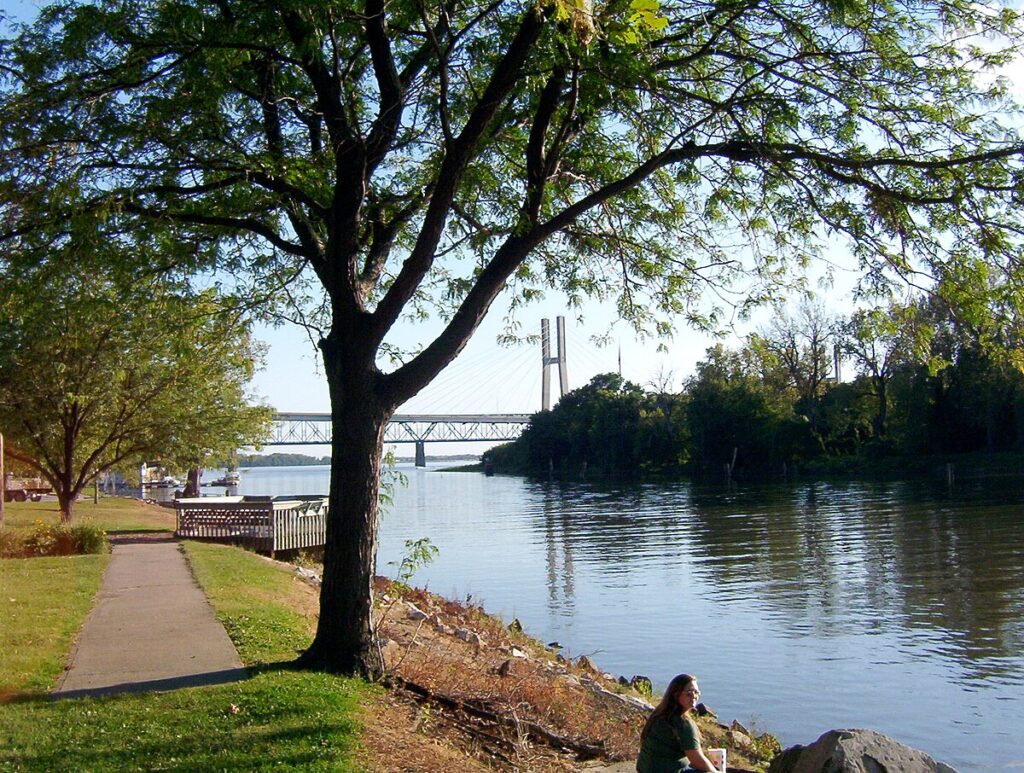
Moving to Quincy, Illinois: A Comprehensive Relocation Guide
Considering moving to Quincy, Illinois? This historic Mississippi River city offers small-city character, affordable living, and Western Illinois charm. With approximately 40,000 residents in 2025, Quincy combines riverfront beauty with manufacturing heritage and a regional hub atmosphere.
Demographic Profile to Consider If Moving to Quincy:
Quincy’s 2025 population is approximately 40,000 residents in this Adams County seat along the Mississippi River in far Western Illinois. The median age is around 40 years, with working families, retirees, and students. The population is approximately 90% White, 5% Black or African American, 3% Hispanic. Quincy features historic downtown along the Mississippi, beautiful Victorian architecture in some neighborhoods, Quincy University campus, and serves as a Western Illinois regional center. The city attracts working families, retirees seeking affordability, and those wanting small-city Midwest living. Quincy appeals to those prioritizing affordability, small-city character, and riverfront beauty. The community values historic preservation, river heritage, and small-city atmosphere. Find trusted local services for moving, living, and working in Quincy.Quincy Relocation Directory
Cost of Living to Consider If Moving to Quincy:
Quincy offers exceptional affordability. Median home values range from $110,000 to $160,000 in 2025, among Illinois’ most affordable while maintaining quality historic housing stock. The median household income is approximately $52,000. Rental properties average $700 to $1,000 monthly. Illinois’ state income tax is flat 4.95%. Property taxes are moderate. Overall cost of living is very low, making Quincy highly attractive for retirees on fixed incomes, working families, and those seeking maximum Midwest affordability. The city provides tremendous value with Mississippi River beauty. Housing costs create exceptional accessibility including Victorian historic homes at bargain prices.
Economy and Job Market:
Quincy’s economy includes manufacturing, healthcare, agriculture, and education. Major employers include Blessing Hospital (regional medical center), Gardner Denver (manufacturing), Titan International (agricultural equipment), Quincy University, and government. Manufacturing remains economically significant. Agriculture including grain processing supports the economy. Healthcare serves the regional population. Typical industries include manufacturing, healthcare, agriculture support, and education. The economy provides stability for a small city though wages reflect rural Midwest levels. Career advancement is somewhat limited in the small city.
Education:
Quincy Public Schools District 172 serves city students with Quincy High School and Quincy Notre Dame (Catholic high school) providing options. School quality is adequate. Quincy University offers four-year programs creating some college atmosphere. John Wood Community College provides associate degrees. The educational infrastructure serves the community with schools reflecting small-city character.
Recreation and Lifestyle:
Quincy offers beautiful Mississippi River location with riverfront parks, historic downtown along Maine Street with local businesses, stunning Victorian architecture in historic neighborhoods (Quincy has one of the Midwest’s finest collections), and the Quincy Museum. Residents enjoy Villa Kathrine (Moorish castle overlooking the river), All Wars Museum, and Mississippi River recreation. The Quincy Gems minor league baseball provides summer entertainment. The lifestyle emphasizes affordable small-city living, historic character, riverfront beauty, and Midwest values. The four-season climate enables varied activities. The community values historic preservation (the architecture is stunning), river heritage, small-city character, and affordability. Living in Quincy means accepting extreme geographic isolation (2 hours to Springfield, 4+ to Chicago or St. Louis), very limited cultural/entertainment options, small-city economy, and rural Midwest character while enjoying exceptional affordability, Mississippi River beauty, Victorian architecture creating rare historic charm, and authentic small-city Midwest atmosphere with low costs enabling comfortable living on modest incomes in Western Illinois’ largest city.
Healthcare and Services:
Quincy residents access healthcare through Blessing Hospital providing comprehensive services as the regional medical center. The healthcare infrastructure serves Western Illinois and Northeast Missouri with quality medical care for the small city size.
Transportation:
Quincy is accessed via Interstate 172, U.S. Route 24, and various routes. Quincy Regional Airport provides very limited commercial service. Quincy Transit Lines operates bus service. Most residents use personal vehicles. The location creates extreme isolation with substantial drives to any major cities.
Conclusion:
Moving to Quincy in 2025 offers affordable Mississippi River living with historic character, small-city atmosphere, and Western Illinois charm. The city’s combination of exceptionally low housing costs, Victorian architecture, and riverfront beauty makes it ideal for retirees, working families, and those seeking extreme affordability where Mississippi River meets Victorian elegance and exceptional value defines Western Illinois’ hidden gem with stunning historic architecture.

